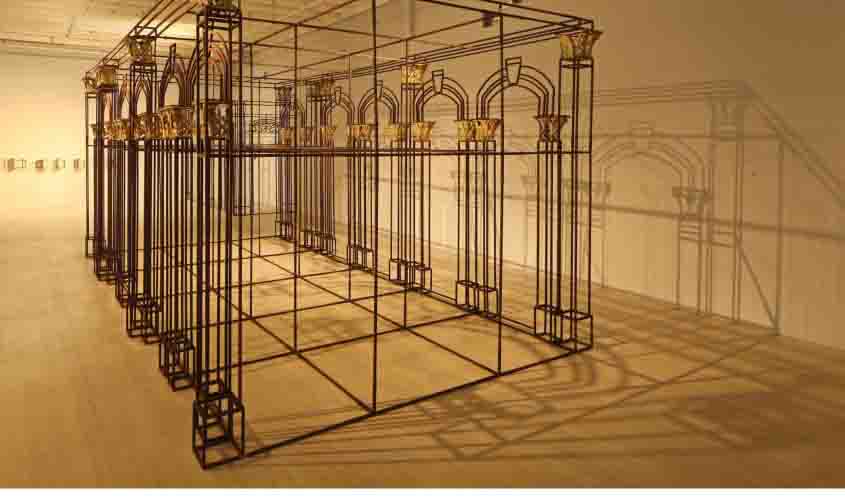‘A city can’t make you feel like an outsider,” says Kolkata-based artist Rathin Barman. “It is all in the mind. You may either let the new landscape empower you or upset you.” Barman has been living in Kolkata for the past 14 years now. The artist, who mostly produces sculptures and drawings on the theme of home, is originally from Tripura. Over the years, Barman, through his works, has inquired the effect dwelling spaces can have on the mind of the dweller. He also often encounters cultural differences in his new “home” as he is not a native of Calcutta.
He says, “I used to eat dry fish and spicy food in Tripura but it’s all good with me. In small cities there is minimal or no presence of art schools, so someone who wants to learn art has to shift to another city.”
The other problem he faced here involved the linguistic differences in Tripura and West Bengal. He says, “We speak Sylheti language there which is a different form of Bengali from what people speak in Kolkata. I was often alienated due to this. But it doesn’t make any difference to me. This is like the same problem one faces when people don’t speak English but Hindi.”
His sculpture series, No…I Remember It Well, is based on the stories he gathered from the many people he spoke to, people who’d come to Kolkata in 1962. In this work, he wanted to bring forth the personal narratives of a number of people who had shifted to the metropolis from Noakhali, a district in south-eastern Bangladesh.
They spoke to the artist at length about their village in the aforementioned district and told him all that they could recall some 50 years after leaving home.

Barman believes that Calcutta was built by those who had been displaced from their hometowns and villages. He says, “Kolkata did not have the facility and infrastructure to accommodate people who moved in here in the ’50s. Few people were sent to refugee camps built in various places in West Bengal and its neighbouring states. However, those camps were ideal and hygienic to live in. Then a majority of displaced people started occupying the abandoned houses in and around the city.”
He further explains how various colonies in Kolkata actually emerged. “Bijaygarh in south Kolkata was among the first occupied colonies. The government tried to vacate the land and people were successful in resisting in most of the places. The buildings were mostly created overnight with found materials like bamboos, tin sheets, tarpaulin pieces, tree trunks, straws etc. After a long battle when they got the land, they started building fixed structures. They designed their own architecture. And the entire process organically added new designs into the existing city.”
Barman has completed his education in mechanical engineering, but found his calling in art. He says, “Once I went to Agartala with my friends to sketch people. The engagement I had with public there was fulfilling. I got to interact with people from various backgrounds. There were vegetable vendors, shopkeepers and others who were quite interested in talking about and participating in art. My network grew. Some of them invited me to meet their family, they were quite curious and even pushed their children to learn art. After that, I decided to shift my base.”
His engagement with engineering drawing helped him to create sketches. He says, “We had to do all kinds of measurements there so when I joined the art school, the sense of drawing lines and all came in handy.”
Barman’s project Home, and a Home is linked to his research in Singapore. It was also selected at the Singapore Art Biennale last year. The work is a result of long conversations with those who had moved to Singapore from Bangladesh in search of jobs. The work characterises displacement by choice, migration and the abandonment of homes and countries. The sculpture and drawings here are retellings from memory, variations on the idea of home that’s left behind, as they are about aspirations of new homes and of homelessness.

He says, “In Bangladesh there are many training centres which are run by the families of ministers. So you have to pay a lot of money to get a labour certificate. And then there is a long chain of brokers who get the work done and in the process they have to spend approx nine lakh rupees and once they get to Singapore the money they get is also less. They have responsibilities at home and they have to send money to their homes back in Bangladesh. So they cannot abandon their jobs as they have already taken a lot of loan by maybe selling their lands, spouse’s and mother’s jewellery. So these people have to stay in Singapore even if they like it or not.”
- Advertisement -

